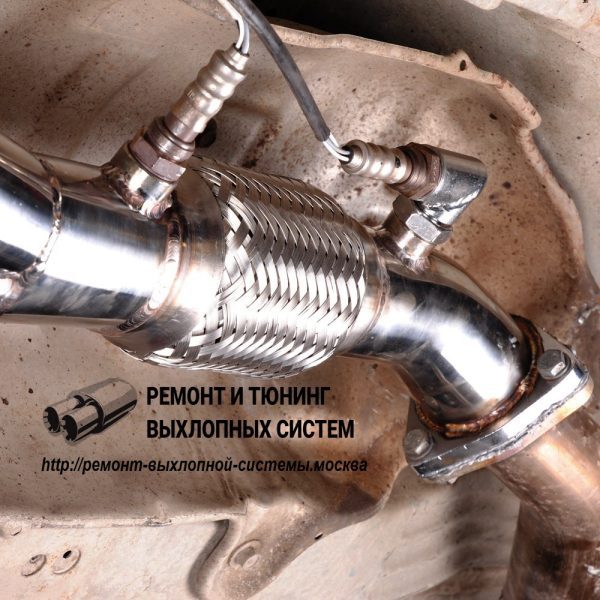
P0431 Warm-up catalyst efficiency
Content
P0431 – OBD-II Trouble Code Technical Description
Warm-up catalyst efficiency below threshold (bank 2)
What does the fault code mean P0431?
DTC P0431 is related to the performance of the second bank catalytic converter and its oxygen sensor. Although this code is a general error message and applies to all OBD-II equipped vehicles, the specific repair procedures will vary depending on the make and model of the vehicle. Typically this code is triggered when the downstream oxygen sensor detects that the converter is not operating within your vehicle's emissions efficiency and pollution control specifications.
P0431 indicates that the engine control module (PCM) has detected an efficiency level below the manufacturer's standard for the catalytic converter. In some cases, this may indicate a general malfunction of the catalytic converter. The PCM monitors the oxygen flow to the catalytic converter and if it is not within the manufacturer's specifications, an error code will be logged.
Possible reasons
DTC P0431 is related to the performance of the second bank catalytic converter and its oxygen sensor. Although this code is a general error message and applies to all OBD-II equipped vehicles, the specific repair procedures will vary depending on the make and model of the vehicle. Typically this code is triggered when the downstream oxygen sensor detects that the converter is not operating within your vehicle's emissions efficiency and pollution control specifications.
P0431 indicates that the engine control module (PCM) has detected an efficiency level below the manufacturer's standard for the catalytic converter. In some cases, this may indicate a general malfunction of the catalytic converter. The PCM monitors the oxygen flow to the catalytic converter and if it is not within the manufacturer's specifications, an error code will be logged.
What are the symptoms of a fault code? P0431?
DTC P0431 is related to the performance of the second bank catalytic converter and its oxygen sensor. Although this code is a general error message and applies to all OBD-II equipped vehicles, the specific repair procedures will vary depending on the make and model of the vehicle. Typically this code is triggered when the downstream oxygen sensor detects that the converter is not operating within your vehicle's emissions efficiency and pollution control specifications.
P0431 indicates that the engine control module (PCM) has detected an efficiency level below the manufacturer's standard for the catalytic converter. In some cases, this may indicate a general malfunction of the catalytic converter. The PCM monitors the oxygen flow to the catalytic converter and if it is not within the manufacturer's specifications, an error code will be logged.
How to diagnose a fault code P0431?
When servicing code P0431, it is important to check the electrical wiring and connectors associated with the catalytic converter for defects and corrosion. You should also compare the electrical data read by the PCM from the converter with the manufacturer's data to assess the severity of the problem.
Solving a problem with this code usually requires only two steps. First, you should check the system for exhaust gas leaks and, if found, repair them. It is then important to ensure that the oxygen sensors are working properly by measuring their voltage. It is recommended to check both sensors as they are usually accessible.
It's also worth noting that most car manufacturers provide extended warranties on emissions-related parts, even if the vehicle's warranty has expired. So if you have a new car, check your warranty as repairs may be covered. Typically, such warranties last for about five years with no mileage limitation.
Diagnostic errors
Diagnostic error P0431:
- Inspect the wiring and connectors associated with the catalytic converter for defects and corrosion.
- Compare the data the PCM reads from the converter with the manufacturer's data to assess the severity of the problem.
- Checking the system for exhaust gas leaks and eliminating them.
- Measuring the voltage on oxygen sensors and checking their correct operation.
- Consider applying for extended warranties on emission-related parts offered by some vehicle manufacturers.
How serious is the fault code? P0431?
Trouble code P0431 can be serious because it indicates problems with the catalytic converter and emissions. Regardless, it is important to resolve the issue quickly to avoid additional damage and costly repairs.
What repair will help eliminate the code? P0431?
The following repairs may be required to resolve the P0431 code:
- Checking and servicing the catalytic converter.
- Inspect and maintain electrical wiring and connectors associated with the catalytic converter.
- Check and replace oxygen sensors if they are faulty.
- Repair exhaust leaks if found.
- Check the extended warranty provided by the vehicle manufacturer to potentially cover repair costs.
P0431 – Brand-specific information
Code P0431 – “Brand Specific Information”
Trouble code P0431 can have different meanings and interpretations depending on the specific make and model of the vehicle. Below are the definitions of P0431 for some brands:
- Toyota: Insufficient efficiency of bank 2 catalyst.
- Ford: Low catalyst efficiency (bank 2).
- Honda: Catalyst system error, bank 2.
- Chevrolet: Catalytic converter error - low efficiency (bank 2).
- Nissan: Oxygen converter error - low efficiency (bank 2).
- Volkswagen: Low catalyst efficiency.
- BMW: Catalyst control system, bank 2 – low efficiency.
- Mercedes-Benz: Low efficiency of the catalyst system.
Please note that the exact meaning and interpretation of the P0431 code may vary depending on the specific model and year of the vehicle. It is always recommended to use official documentation and diagnostic tools to pinpoint the cause of the error on your vehicle.

